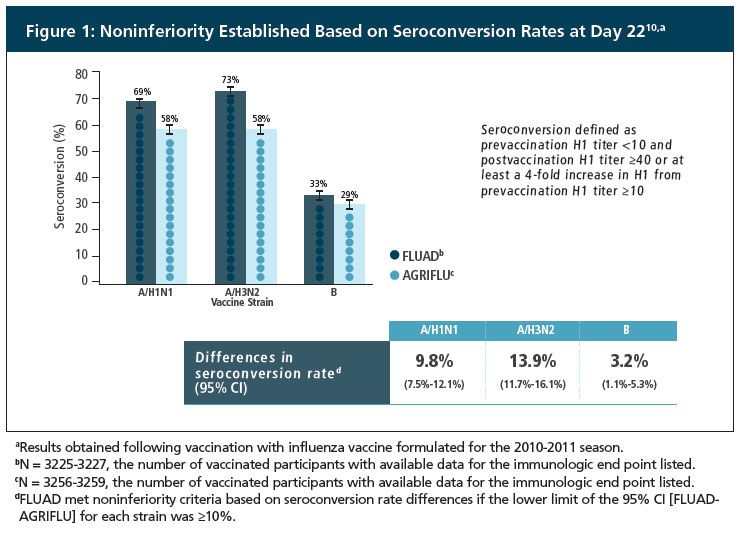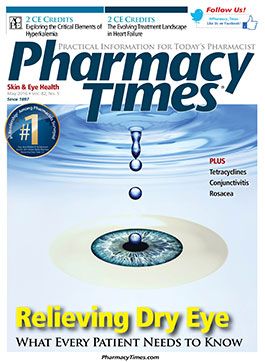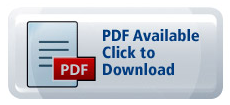Publication
Article
Pharmacy Times
FLUAD(TM) (influenza vaccine, adjuvanted) to Help Protect Elderly Patients Against Influenza
This article was sponsored by Seqirus Inc.
Please see Important Safety Information below and US full Prescribing Information for FLUAD.
Influenza affects elderly patients disproportionately, with an estimated 50% to 70% of hospitalizations and 80% to 90% of deaths from influenza occurring in adults 65 years or older.1 Among patients with underlying chronic comorbid conditions, such as acute ischemic heart disease, stroke, or pneumonia, influenza is the most common cause of mortality during the winter months.2 Symptoms of influenza in older adults may include anorexia, malaise, weakness, dizziness, profuse sweating, and mottled extremities.3 Annual vaccination, which is recommended by the CDC for everyone 6 months or older, can help reduce severe outcomes in patients at risk, such as those 65 years or older.1,4
Unique Challenges in Elderly Patients
The elderly population is unique because of age-related declines in immune function. These complex changes, known as immunosenescence, can result in poorer response to influenza vaccination in adults older than 65 years.5,6 Both the initial and long-term immune responses to vaccinations are compromised in these patients.6
Scientists have developed strategies for improving vaccine-mediated protection against influenza in the elderly population. One product is the highdose influenza vaccine, which contains 4 times as much antigen as the standard influenza vaccine. Other products have attempted to augment local immunity by administering the influenza vaccine intradermally.7 FLUAD™ (influenza vaccine, adjuvanted) contains the proprietary adjuvant MF59®, which has demonstrated a strong immune response in a standard dose and which is hypothesized to increase immune cell recruitment at the injection site and augment the process of antigen presentation.8
Until the 1997 approval of FLUAD in Italy, early 20th century aluminumbased products were the only available adjuvanted vaccines on the market.8,9 Since then, the immunogenicity of the MF59-adjuvanted influenza vaccine has been confirmed in a pivotal trial (N = 3225-3227 in the FLUAD group) in adults 65 years or older. To date, more than 81 million doses of FLUAD have been distributed in more than 30 coun­tries where it is approved.8,10,11

Clinical Study of Immunogenicity of FLUAD
In the pivotal clinical trial for FLUAD, adults 65 years or older, with a mean age of 72 years, received FLUAD (N = 3545) or AGRIFLU (influenza vaccine) (N = 3537), a US-licensed nonadjuvanted influenza vaccine. Clinical immunogenicity was assessed in 91% of subjects receiving FLUAD and 92% of subjects receiving AGRIFLU at day 22 after the vaccination. In an analysis designed to assess noninferiority, researchers assessed seroconversion rates and geometric mean antibody titer ratios. Noninferiority was established for both outcome measures (Figures 1 and 2).10
Safety Considerations for FLUAD
Key safety considerations with FLUAD include its contraindication for use in patients who have previously experienced an allergic reaction to any vaccine component, including egg protein. Consideration of the benefits and risks of administering the influenza vaccine should be made in any patient who experienced Guillain-Barré Syndrome within 6 weeks of receiving a previous influenza vaccine. Because the tip cap of the prefilled FLUAD syringe contains natural rubber latex, allergic reactions may occur in individuals with latex sensitivity who receive the vaccine. The most common local adverse reactions in the pivotal clinical trial included injection site pain (25%) and tenderness (21%), whereas systemic adverse reactions included myalgia (15%), headache (13%), and fatigue (13%). These adverse events (AEs) were solicited, and while higher rates of solicited AEs were noted with FLUAD, they were typically mild to moderate in severity.10
Role of the Pharmacist
Data show that a growing number of elderly patients receive their annual influenza vaccine from their pharmacist. Influenza vaccinations are available in pharmacies in all 50 states, which has resulted in improved influenza vaccination rates in the elderly population.12,13
Patients can look to their pharmacist to provide a vaccine with characteristics that will best serve them. By providing education about the important characteristics of FLUAD, pharmacists can potentially provide their patients 65 years or older with an influenza vaccine specifically designed for their needs to help protect them against influenza.
Important Safety Information
INDICATIONS
FLUAD is an inactivated influenza vaccine indicated for active immunization against influenza disease caused by influenza virus subtypes A and type B contained in the vaccine. FLUAD is approved for use in persons 65 years of age and older.
CONTRAINDICATIONS
Severe allergic reaction to any component of the vaccine, including egg protein, or after a previous dose of any influenza vaccine.
WARNINGS AND PRECAUTIONS
- If Guillain-Barré Syndrome (GBS) has occurred within six weeks of previous influenza vaccination, the decision to give FLUAD should be based on careful consideration of the potential benefits and risks.
- The tip caps of the prefilled syringes contain natural rubber latex which may cause allergic reactions in latex sensitive individuals.
ADVERSE REACTIONS
- The most common (≥10%) local (injection site) adverse reactions observed in clinical studies were injection site pain (25%) and tenderness (21%).
- The most common (≥10%) systemic adverse reactions observed in clinical studies were myalgia (15%), headache (13%) and fatigue (13%).
References
- CDC. What should you know and do this flu season if you are 65 years and older. CDC website. http://www.cdc.gov/flu/about/disease/65over.htm. Updated August 17, 2015. Accessed February 29, 2016.
- Lang PO, Mendes A, Socquet J, Assir N, Govind S, Aspinall R. Effectiveness of influenza vaccine in aging and older adults: comprehensive analysis of the evidence. Clin Interv Aging. 2012;7:55-64. doi:10.2147/CIA.S25215.
- Cohen YZ, Dolin R. Influenza. In: Kasper D, ed. Harrison’s Principles of Internal Medicine. 19th ed. New York, NY: McGraw-Hill; 2015. http://accessmedicine.mhmedical.com/content.aspx?sectionid=79738663&bookid=1130&jumpsectionID=79738694&Resultclick=&q=influenza+pathogenesis. Accessed March 3, 2016.
- Goodwin K, Viboud C, Simonsen L. Antibody response to influenza vaccination in the elderly: a quantitative review. Vaccine. 2006;24(8):1159-1169.
- McElhaney JE, Zhou X, Talbot HK, et al. The unmet need in the elderly: how immunosenescence, CMV infection, co-morbidities and frailty are a challenge for the development of more effective influenza vaccines. Vaccine. 2012;30(12):2060-2067. doi:10.1016/j.vaccine.2012.01.015.
- Weinberger B, Herndler-Brandstetter D, Schwanninger A, Weiskopf D, Grubeck-Loebenstein B. Biology of immune responses to vaccines in elderly persons. Clin Infect Dis. 2008;46(7):1078-1084. doi:10.1086/529197.
- Haq K, McElhaney JE. Immunosenescence: influenza vaccination and the elderly. Curr Opin Immunol. 2014;29:38-42. doi: 10.1016/j.coi.2014.03.008.
- O‘Hagan DT, Ott GS, Nest GV, Rappuoli R, Giudice GD. The history of MF59® adjuvant: a phoenix that arose from the ashes. Expert Rev Vaccines. 2013;12(1):13-30. doi: 10.1586/erv.12.140.
- O’Hagan DT, Ott GS, De Gregorio E, Seubert A. The mechanism of action of MF59 - an innately attractive adjuvant formulation. Vaccine. 2012;30(29):4341-4348. doi: 10.1016/j.vaccine.2011.09.061.
- Fluad [package insert]. Cambridge, MA: Novartis Vaccines and Diagnostics, Inc.; 2015.
- Seqirus data on file. Novartis Vaccines and Diagnostics Inc. Development Safety Update Report. 2015.
- Bach AT, Goad JA. The role of community pharmacy-based vaccination in the USA: current practice and future directions. IPRP. 2015;4:67-77.
- Steyer TE, Ragucci KR, Pearson WS, Mainous AG 3rd. The role of pharmacists in the delivery of influenza vaccinations. Vaccine. 2004;22(8):1001-1006.
GMCC-805_2016-03-23








